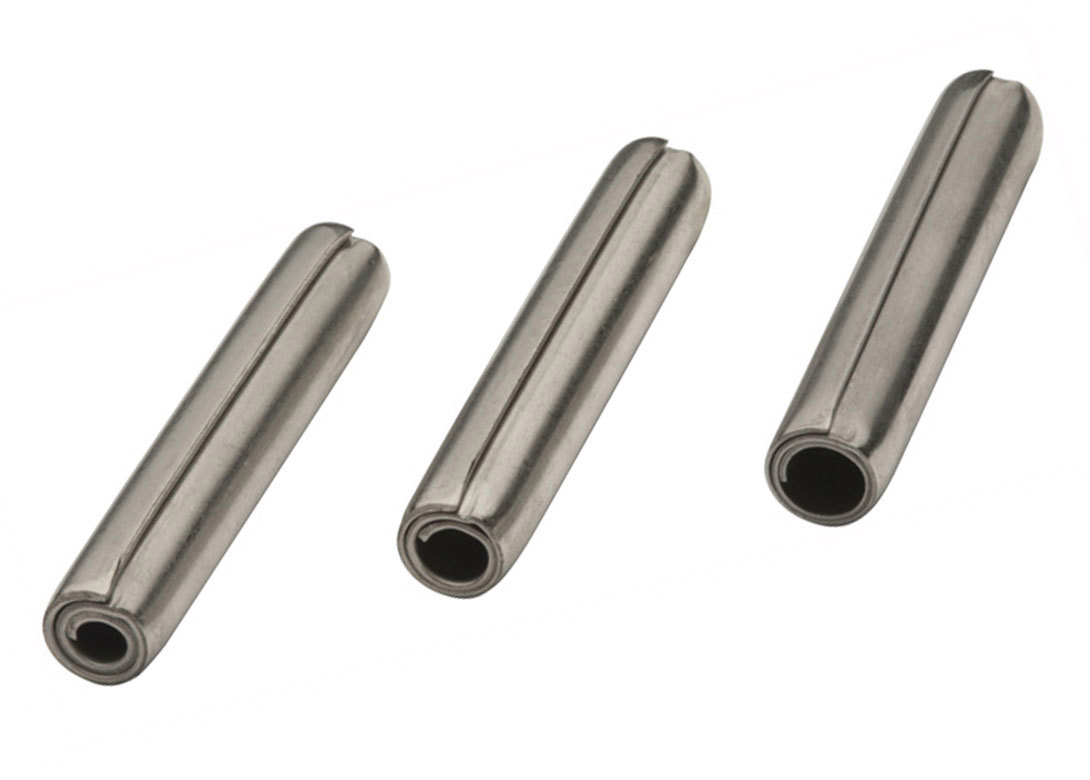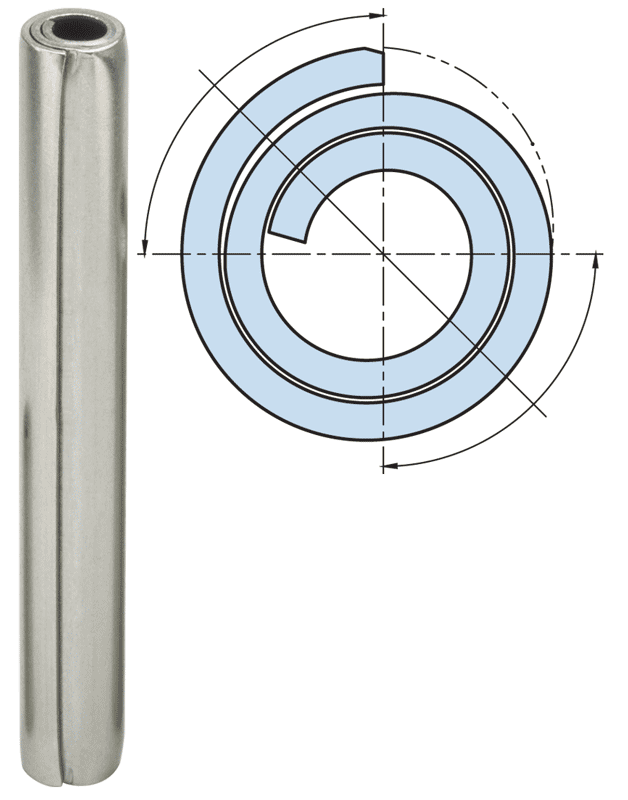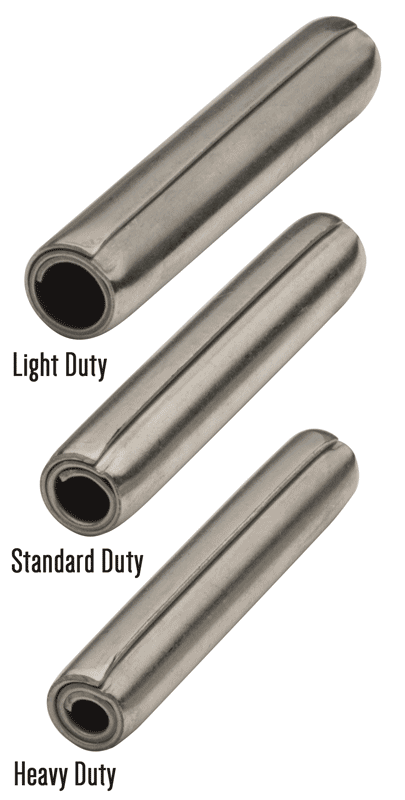
What is a coiled pin?
Invented in 1948 by SPIROL the coiled spring pin was specifically designed to address deficiencies associated with conventional methods of fastening such as threaded fasteners, rivets and other types of pins subject to lateral forces. Easily recognised by its unique 2¼ coil cross section, coiled pins are retained by radial tension when installed into the host component, and they are the only pins with uniform strength and flexibility after insertion.
Truly an ‘engineered fastener’, the coiled pin is available in three ‘duties’ to enable the designer to choose the optimum combination of strength, flexibility and diameter to suit different host materials and application requirements. The coiled pin distributes static and dynamic loads equally throughout its cross section without a specific point of stress concentration. Furthermore, its flexibility and shear strength are unaffected by the direction of the applied load, and therefore, the pin does not require orientation in the hole during assembly to maximise performance.
In dynamic assemblies, impact loading and wear often lead to failure. Coiled pins are designed to remain flexible after installation and are an active component within the assembly. The coiled pin’s ability to dampen shock/impact loads and vibration prevents hole damage and ultimately prolongs the useful life of an assembly.
The coiled pin was designed with assembly in mind. Compared to other pins, their square ends, concentric chamfers and lower insertion forces make them ideal for automated assembly systems. The features of the coiled spring pin make it the industry standard for applications where product quality and total manufacturing cost are critical considerations.

Three duties
Flexibility, strength, and diameter must be in the proper relationship to each other and to the host material to maximise the unique features of the coiled pin. A pin too stiff for the applied load would not flex, causing damage to the hole. A pin too flexible would be subject to premature fatigue. Essentially, balanced strength and flexibility must be combined with a large enough pin diameter to withstand the applied loads without damaging the hole. That is why coiled pins are designed in three duties - to provide a variety of combinations of strength, flexibility and diameter to suit different host materials and applications.

Choosing the proper pin diameter and duty
It is important to start with the load to which the pin will be subjected. Then evaluate the material of the host to determine the duty of the coiled pin. The pin diameter to transmit this load in the proper duty can then be determined from the shear strength tables published in the product catalogue taking into consideration these further guidelines:
- Wherever space permits, use standard duty pins. These pins have the optimum combination of strength and flexibility for use in nonferrous and mild steel components. They are also recommended in hardened components because of their greater shock absorbing qualities.
- Heavy-duty pins should be used in hardened materials where space or design limitations rule out a larger diameter standard duty pin.
- Light duty pins are recommended for soft, brittle or thin materials and where holes are close to an edge. In situations not subjected to significant loads, light duty pins are often used because of easy installation resulting from lower insertion force. Although this article offers general design guidelines, it is recommended that application engineers who specialise in fastening and joining be consulted to ensure the optimum coiled pin is specified for each application.

Having spent a decade in the fastener industry experiencing every facet – from steel mills, fastener manufacturers, wholesalers, distributors, as well as machinery builders and plating + coating companies, Claire has developed an in-depth knowledge of all things fasteners.
Alongside visiting numerous companies, exhibitions and conferences around the world, Claire has also interviewed high profile figures – focusing on key topics impacting the sector and making sure readers stay up to date with the latest developments within the industry.
Don't have an account? Sign Up
Signing up to FastFixTechnology.com enables you to manage your account details.